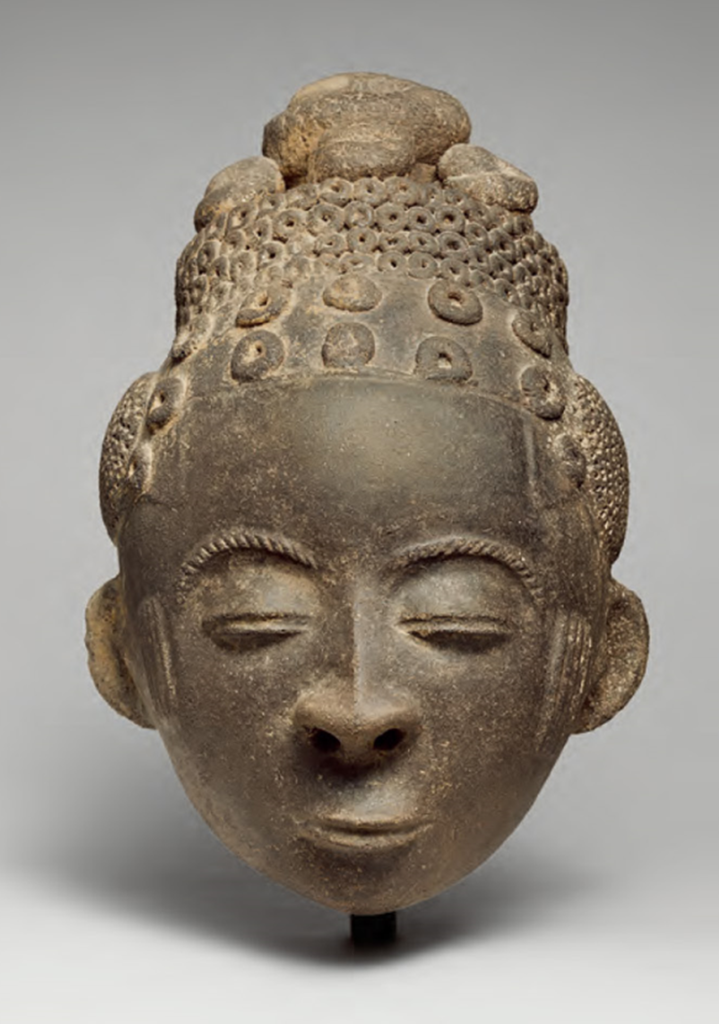
Name of Artifact: Memorial Head (Nsodie)
Original Country: Ghana
Year of Production: Ca. 1800
Location Now: The Metropolitan Museum of Art, New York, USA
Background Information:
This terracotta memorial head, created by an Akan artist in Ghana around 1800, is a poignant example of Akan funerary art. Terracotta effigies were central to the lavish postburial ceremonies held for senior chiefs, priests, and queen mothers in southern and southwestern Akan centers as early as the seventeenth century. This process of commemoration, which could take place up to two years after the subject’s death, began with a female artist carefully capturing the honoree’s essence in modeled clay. While the idealized facial expression depicted is invariably one of supreme calm and serenity, the individual’s personal style emerges through distinctive facial markings and elaborate hair arrangements.
Prayers ensured that the rendering truly represented the deceased and invoked their spirit within the portrait. The work was often painted and clothed in advance of being paraded on a palanquin through the community. Such public salutes to esteemed leaders culminated in the deposition of their likeness, along with food and drink, at the site of their new “residence” outside the community, now as venerated ancestors. Following their “planting” at a ceremonial site, they might be visited with annual offerings until they were subsumed back into the landscape.
This particular memorial head, with its serene expression and intricate details, reflects the Akan belief in the continuity of life and the importance of honoring ancestors. It serves as a powerful reminder of the cultural and spiritual practices that have shaped Akan society for centuries.
